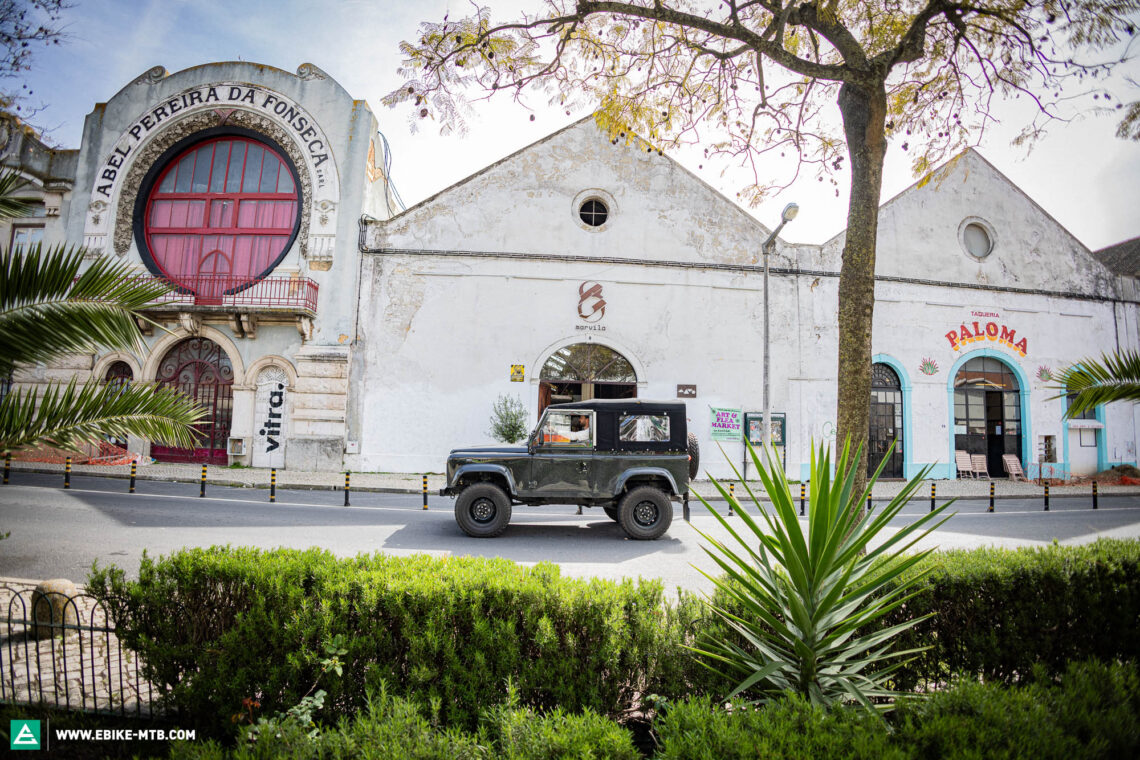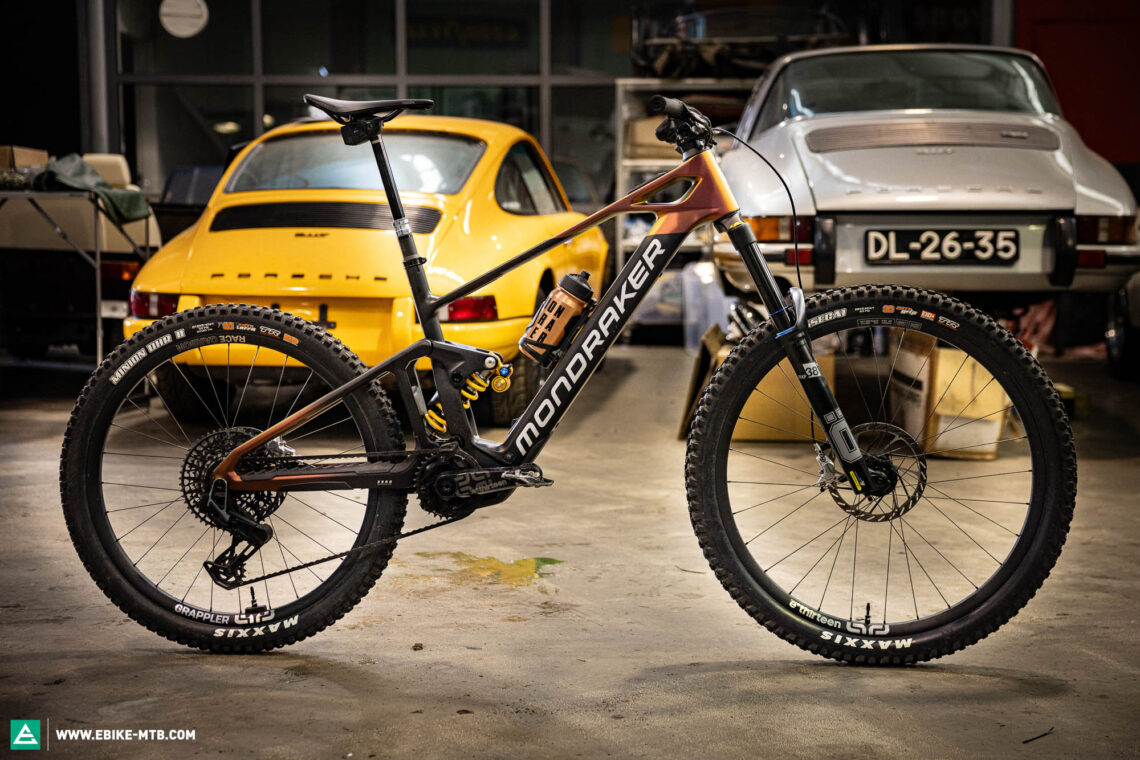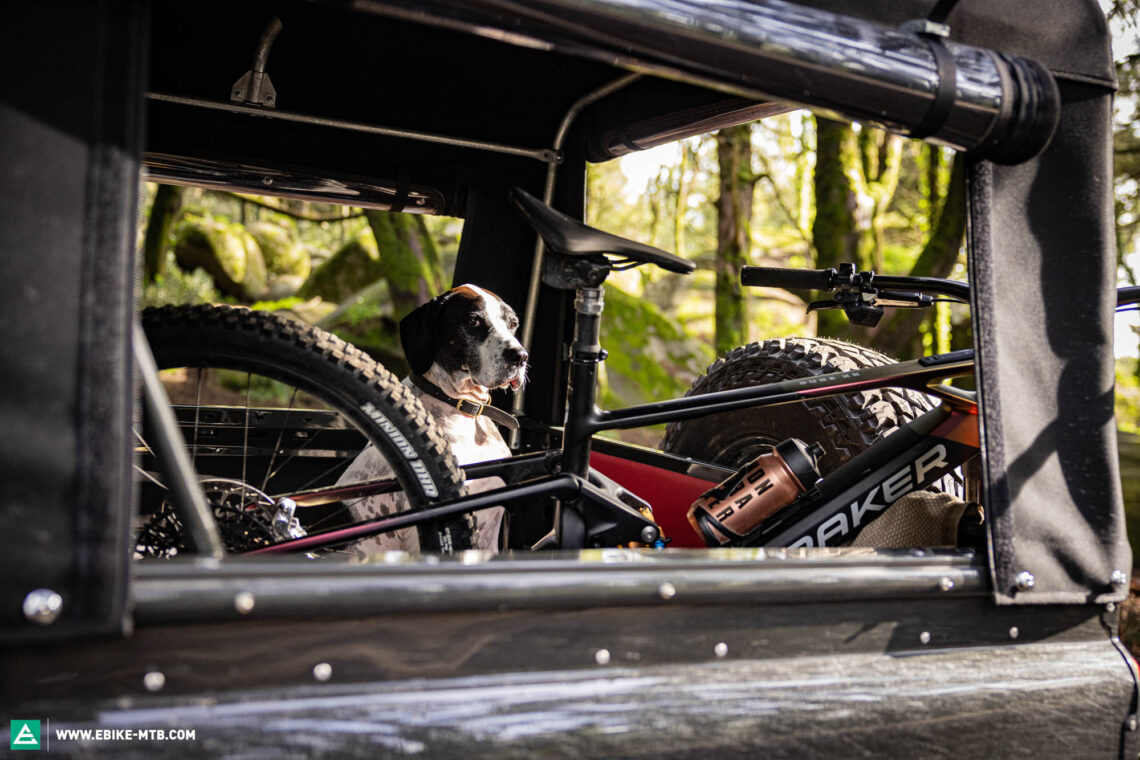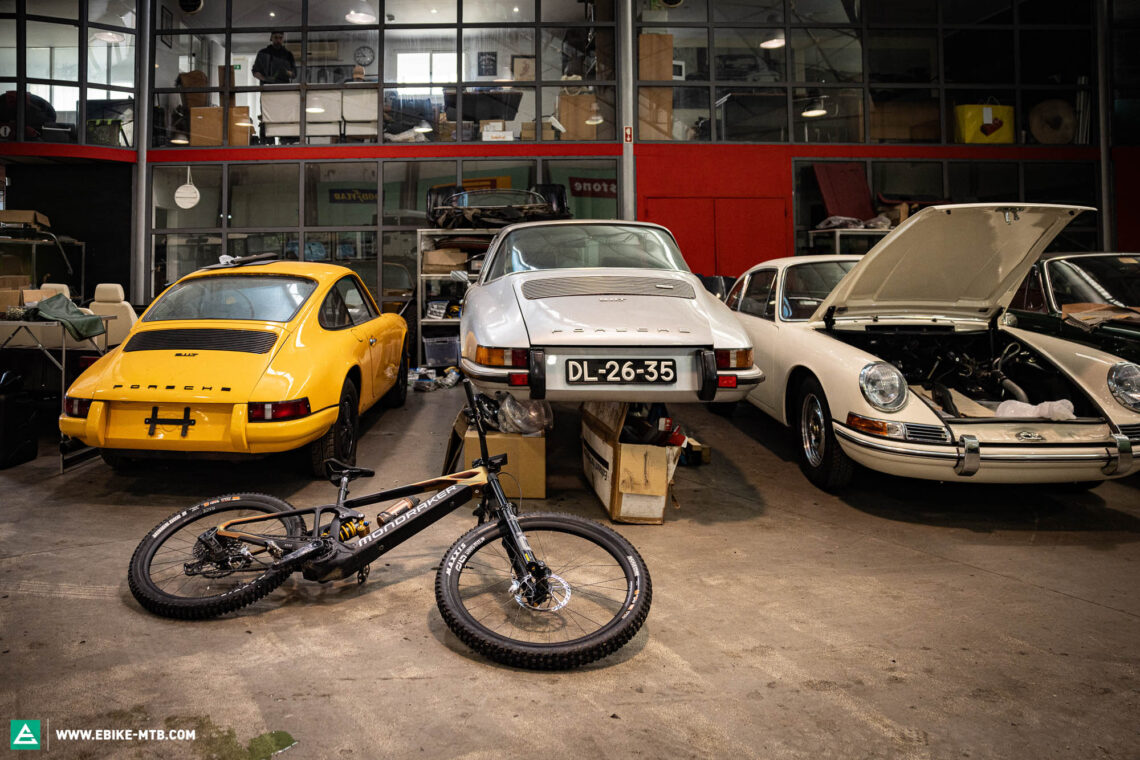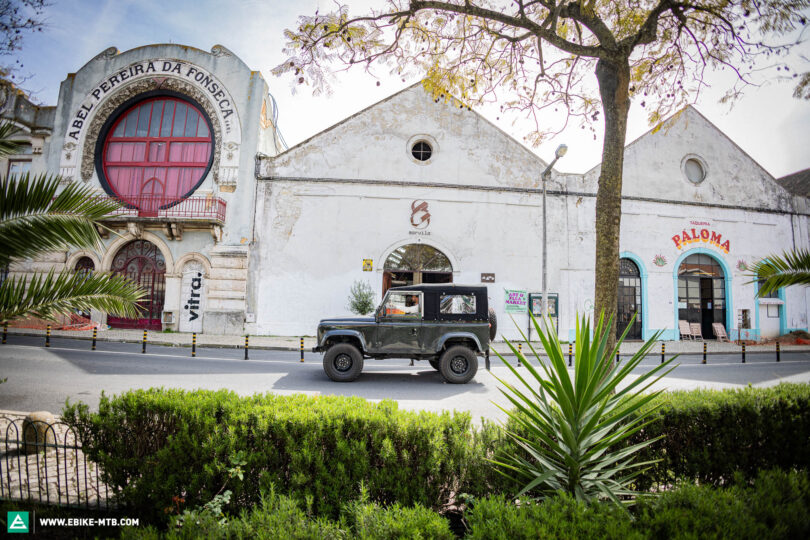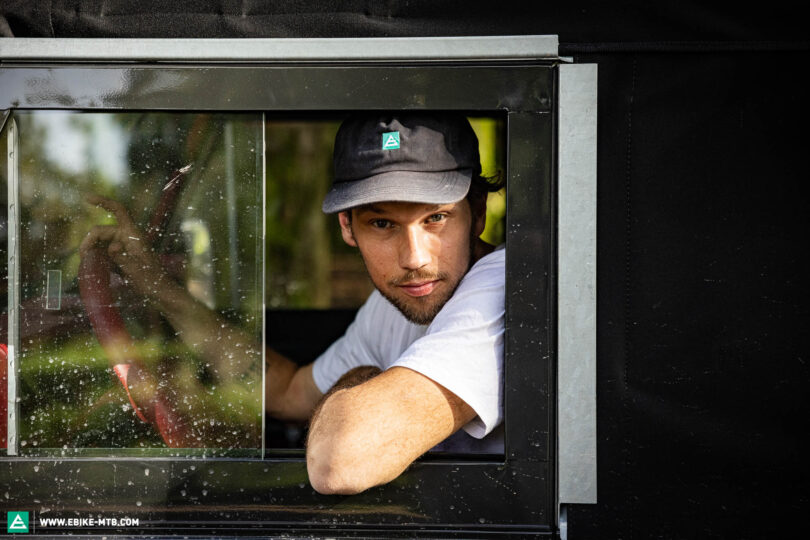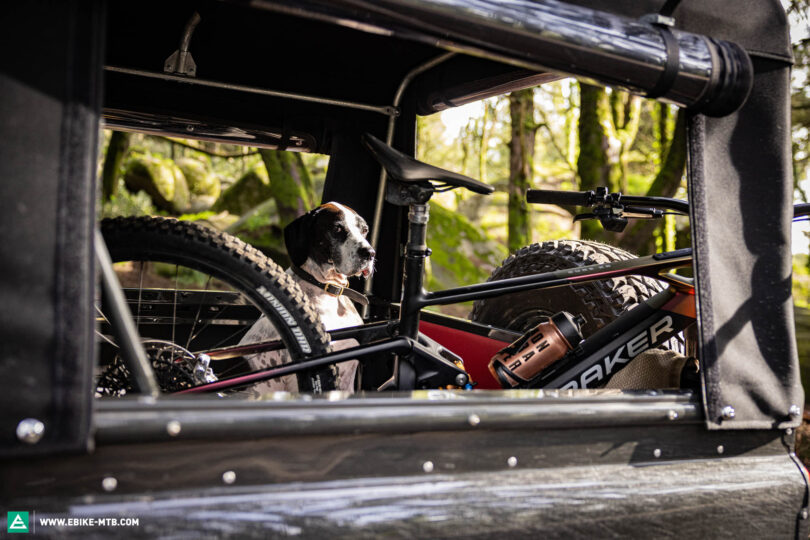A light eMTB or just a somewhat lighter eMTB? How much power does a light eMTB need, what defines it and is the categorisation still relevant? The new Mondraker Dune Carbon light eMTB with a powerful Bosch Performance Line SX motor and up to 650 Wh battery capacity raises many questions. We put it to the test for you.

19.74 kg in size L | € 11,999 | Manufacturer’s website
The new Mondraker Dune Carbon is more than just another light eMTB. The Spanish manufacturer claim to have reached the next evolutionary stage in enduro mountain biking. “Enduro” is another marketing term that isn’t really clearly defined, but somehow still makes its way into this review, along with the term “light eMTB”.
Enduro is often equated with challenging descents that are generally steeper and more technical than most of us will ever experience on our home trails – unless you’re one of the lucky few who live in Andorra.
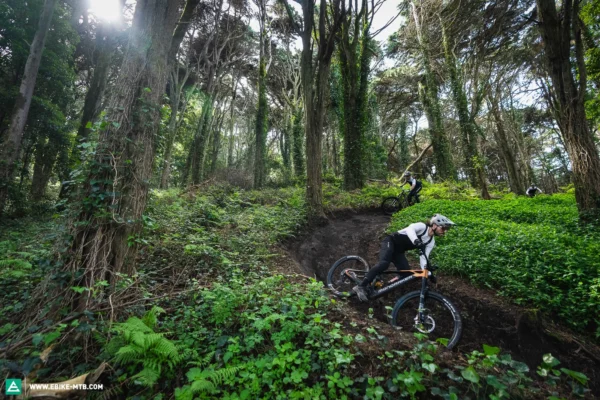

Then there’s the enduro race format, where you complete several time trials, mostly downhill. Between trials, you ride your bike back up the mountain to the next trial start. So, where does the Mondraker Dune Carbon light eMTB fit in here?
For the bike historians among you, the connection between enduro and the Mondraker Dune will be obvious. The Dune has been a cornerstone of Mondraker’s traditional mountain bike range for over a decade. Introduced in 2008, it marked a new chapter for the manufacturer. Equipped with massive travel, it was also the first Mondraker mountainbike to feature ZERO suspension kinematics. And today, Mondraker bikes are still known for their rear suspension concept with a floating shock and virtual pivot point.
We also think that the Dune was incredibly sleek and ahead of its time in terms of design. Check out the 2015 dream bike test in our sister magazine ENDURO. Fast forward to 2024 and here is the revival.
It’s clear that the Mondraker Dune Carbon XR has all the same virtues as its non-motorised predecessor: it’s stunningly beautiful, offers plenty of travel – between 170 mm and 180 mm front and 165 mm rear – and features updated ZERO suspension kinematics. But there is one big difference: the ebike is powered by the light yet powerful Bosch Performance Line SX motor with up to 55 Nm torque and 600 watts of maximum power. To find out how the Bosch SX motor stacks up against the competition from Shimano, Specialized and others, check out our big motor comparison featuring the most important models. Our test bike, the Mondraker Dune Carbon XR, weighs 19.74 kg in size L and costs € 11,999.


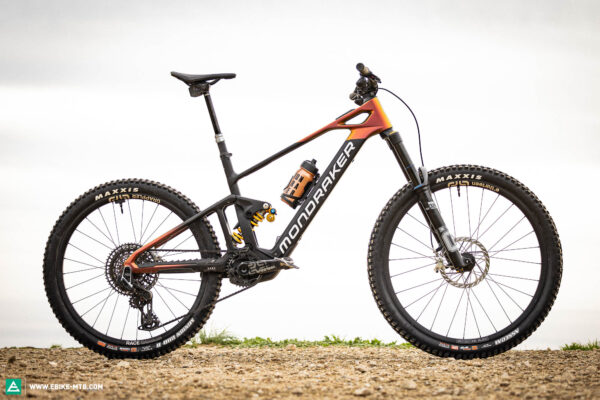
Listing the key specs, the next question is how the bike stacks up against the Mondraker Neat, the other powerful light eMTB in the Mondraker portfolio, featuring a TQ-HPR50 motor. In early 2024 we tested the Neat head-to-head against the 26 hottest eMTBs of the season. But how do the stable mates compare, and which is better suited to which type of rider and use? Find the answers in this article!
“Not another light eMTB…” – The new Mondraker Dune Carbon in detail
The Mondraker Dune aims to find its niche in the difficult to define “light eMTB” segment. The range of light eMTBs is expanding rapidly, providing an almost seamless transition between analogue mountain bikes and full power eMTBs. Light eMTBs are used for everything from challenging cross-country rides to adventurous downhill battles. What the bike industry would informally define as the “classic light eMTB” typically falls in the middle of this spectrum.
The weight of the classic light eMTB should be kept as low as possible. We find the same components that that are often used on analogue trail mountain bikes. What’s more, analogue trail bikes have also been used as inspiration for the geometry and suspension setup, with the aim of giving the light eMTB efficient propulsion and agile, nimble handling. The motor power is limited to a strong tailwind rather than the uphill turbo that some full-assist motors provide. And this is where the Mondraker departs from that classic concept.

According to Mondraker, the Bosch SX motor is too powerful for a “typical” light eMTB and is better suited to long-stroke and “fat” bikes. However, “fat” is relative; the Mondraker Dune Carbon XR we tested, with its robust steel shock and 180/165 mm travel, doesn’t surpass the 20 kg mark. Still, at 19.74kg, it’s almost 2 kg heavier than the 17.8 kg Mondraker Neat RR SL.

The 400 Wh Bosch CompactTube battery is permanently installed in the down tube and cannot be removed from the bike for charging. However, with the 250 Wh PowerMore Range Extender, the available battery capacity can be increased by more than 60%. The Range Extender is attached to the bottle cage mounting points on the down tube and plugged into the charging port directly below when in use.

To make sure you don’t have to do without a water bottle in this setup, there’s a mounting option for FIDLOCK bottles on the top tube. With a bit of DIY skill, this mounting point can also double as a tool mount.

We feel the Mondraker team have gone overboard with the Bosch Smart System controls. In addition to the wireless mini remote and the system controller on the top tube, the rather large Bosch Kiox 500 display is mounted in front of the cockpit. This doesn’t quite fit in with the Dune’s otherwise sharp-edged and slim silhouette.

Apart from a rudimentary navigation function, the display shows a lot of rather insignificant motor system details. The LED bar on the system controller would have been sufficient for essential information such as battery status or motor support mode. Furthermore, the positioning of the Kiox 500’s display, angled and protruding in front of the stem, seems less than ideal.
Until Bosch finds a way to mount the display on the top tube, we’d be happy to do without it. Fortunately, it can be easily removed, leaving only a small cable on the head tube. It’s best to ask your Bosch or Mondraker dealer if they can help you rewire it or remove it completely. As with the display cables, all the other cables disappear through the headset into the frame.
The real downside to the standard display is that you pay for it, even if you don’t want it!


Mondraker make a second small faux pas with an unsightly nut on the motor mount. Otherwise, the Mondraker Dune is as visually stunning as Denis Villeneuve’s blockbuster “Dune”. The colour gradient on the rear triangle resembles a shadow cast over red desert sand. Depending on your viewing angle, the red shifts to light orange or deep purple.



The very straight and angular lines create a harmonious design. Compared to the Mondraker Neat, the edges are somewhat sharper and the link elements of the rear triangle are slightly larger. A small, two-piece mudguard on the rear triangle protects the shock and paintwork from debris.


The rear thru-axle is completely enclosed by the dropout, making the dropout vulnerable to nicks and scratches. As your first upgrade, consider a thru-axle with a quick release to protect the carbon frame at this sensitive point.

Looking closer at the rear end, bike historians will notice another similarity with the last generation analogue Dune: the small 27.5″ rear wheel and the relatively short rear triangle with a chainstay length of 445 mm. According to Mondraker, the new Dune Carbon light eMTB also follows the Forward Geometry concept. We’re not so sure about that, let us explain. Mondraker eMTBs usually feature 29″ tires, longer rear triangles and a generous reach. On the new Dune, however, not only is the rear triangle relatively short, but the reach has also shrunk compared to, say, the Mondraker Neat. While our taller riders usually felt comfortable on the M size Mondraker bikes, the M sized Dune light eMTB is just like any other brand’s M size bike. We were able to test the Dune in both size M and L, and we share our riding impressions with you below.

Model variants of the Mondraker Dune
The Mondraker Dune Carbon is available in three model variants and as a frameset. The Dune Carbon XR we tested, priced at € 11,999, is the top-of-the-range model with the most downhill-oriented spec. It is the only model with 180 mm of front travel. The travel is provided by Öhlins: an RFX38 suspension fork meets an Öhlins TTX22 M.2 coil shock at the rear. The rear coil shock is another distinctive feature of the Dune XR.


For all the other components, Mondraker continue to reach high up on the manufacturer’s shelves, installing top-of-the-range, high-performance parts such as a RockShox Reverb AXS dropper post, SRAM Transmission X01 groupset, E*thirteen carbon wheels and powerful SRAM CODE Ultimate stoppers.



Mondraker Dune Carbon XR
€ 11,999
Specifications
Motor Bosch Performance Line SX 55 Nm
Battery Bosch CompactTube 400 Wh
Display Bosch Kiox 500
Fork Öhlins RXF38 M.2 180 mm
Rear Shock Öhlins TTX22 M.2 Coil 165 mm
Seatpost RockShox Reverb AXS 170 mm
Brakes SRAM CODE Ultimate Stealth 200 mm
Drivetrain SRAM X01 AXS Transmission 1x12
Stem ONOFF Krypton FG 30 mm
Handlebar ONOFF Krypton Carbon 1.0 800 mm
Wheelset E*thirteen Grappler Race Carbon 29"/27.5"
Tires MAXXIS ASSEGAI MaxxGrip Exo+/ Minion DHR II MaxxTerra Doubledown 2.5"/2.4"
Technical Data
Size S M L XL
Weight 19.74 kg
Specific Features
Range extender compatible
FIDLOCK mount
The mid-range Mondraker Dune Carbon RR, priced at € 9,499, relies on top-of-the-range Öhlins air suspension and other components that are still high-end but don’t cost their weight in gold.

Mondraker Dune Carbon RR
€ 9,499
Specifications
Motor Bosch Performance Line SX 55 Nm
Battery Bosch CompactTube 400 Wh
Display Bosch Kiox 500
Fork Öhlins RXF38 M.2 170 mm
Rear Shock Öhlins TTX Air 165 mm
Seatpost ONOFF Pija 125–200 mm
Brakes SRAM CODE Bronze Stealth 200 mm
Drivetrain SRAM GX AXS Transmission 1x12
Stem ONOFF Krypton FG 30 mm
Handlebar ONOFF Krypton Carbon 1.0 800 mm
Wheelset E*thirteen Grappler Race 29"/27.5"
Tires MAXXIS ASSEGAI MaxxGrip Exo+/ Minion DHR II MaxxTerra Doubledown 2.5"/2.4"
Technical Data
Size S M L XL
Specific Features
Range extender compatible
FIDLOCK mount
For the Dune XR and Dune RR, Mondraker and Öhlins have worked closely together to fine-tune the range of adjustment of the suspension elements to ensure that even the average rider can benefit from it.
The entry-level model, the Mondraker Dune R, is priced at € 7,999 and features FOX air suspension with a FOX 38 Performance fork and FOX FLOAT X Performance rear shock.

Mondraker Dune Carbon R
€ 7,999
Specifications
Motor Bosch Performance Line SX 55 Nm
Battery Bosch CompactTube 400 Wh
Display Bosch Kiox 500
Fork FOX 38 Performance 170 mm
Rear Shock FOX FLOAT X Performance 165 mm
Seatpost ONOFF Pija 125–200 mm
Brakes SRAM DB8 200 mm
Drivetrain SRAM GX/ NX Eagle 1x12
Stem ONOFF Krypton FG 30 mm
Handlebar ONOFF Krypton 1.0 800 mm
Wheelset E*thirteen Grappler Core 29"/27.5"
Tires MAXXIS ASSEGAI MaxxGrip Exo+/ Minion DHR II MaxxTerra Doubledown 2.5"/2.4"
Technical Data
Size S M L XL
Specific Features
Range extender compatible
FIDLOCK mount
The two more affordable versions have a slightly more moderate steering angle (64° instead of 63.6°) and subtly different geometry values due to the somewhat shorter suspension fork. The MAXXIS tire combination of ASSEGAI MaxxGrip at the front and DHR II MaxxTerra at the rear ensures that all three versions are as race-ready as possible from the factory. The rear tire features the robust Doubledown casing construction, while the front uses the slightly lighter EXO+ casing.
If you prefer to customise your dream bike and leave nothing to chance, you can opt for the frameset, which includes the headset, stem and Öhlins coil shock in the same colour as the Dune XR for € 6,799, as shown in the photos from our test ride.

Geometry Dune Carbon XR
| Size | S | M | L | XL |
|---|---|---|---|---|
| Seat tube | 380 mm | 420 mm | 450 mm | 490 mm |
| Top tube | 580 mm | 600 mm | 625 mm | 650 mm |
| Head tube | 100 mm | 110 mm | 130 mm | 140 mm |
| Head angle | 63.6° | 63.6° | 63.6° | 63.6° |
| Seat angle | 77.1° | 77.1° | 77.1° | 77.1° |
| Chain stays | 445 mm | 445 mm | 445 mm | 445 mm |
| BB Drop | -18/+3 mm | -18/+3 mm | -18/+3 mm | -18/+3 mm |
| Wheelbase | 1,236 mm | 1,260 mm | 1,289 mm | 1,313 mm |
| Reach | 440 mm | 460 mm | 480 mm | 500 mm |
| Stack | 625 mm | 634 mm | 652 mm | 662 mm |
Geometry Dune Carbon RR/R
| Size | S | M | L | XL |
|---|---|---|---|---|
| Seat tube | 380 mm | 420 mm | 450 mm | 490 mm |
| Top tube | 580 mm | 600 mm | 625 mm | 650 mm |
| Head tube | 100 mm | 110 mm | 130 mm | 140 mm |
| Head angle | 64° | 64° | 64° | 64° |
| Seat angle | 77.5° | 77.5° | 77.5° | 77.5° |
| Chainstays | 445 mm | 445 mm | 445 mm | 445 mm |
| BB Drop | -21/0 mm | -21/0 mm | -21/0 mm | -21/0 mm |
| Wheelbase | 1,234 mm | 1,256 mm | 1,285 mm | 1,309 mm |
| Reach | 445 mm | 465 mm | 485 mm | 505 mm |
| Stack | 621 mm | 630 mm | 648 mm | 658 mm |
Nimble dune buggy or lumbering sandworm? – The Mondraker Dune Carbon in review
For our Mondraker Dune Carbon test we travelled to Sintra, one of our favourite bike destinations not just in Portugal, but in the world! After the official bike launch, we visited our art director Julian in nearby Lisbon and extended our trail adventure with sun, sea and a Land Rover Defender restored by Timeless Garage. Sounds like hard work? You bet it was ;). But the result is an exhilarating story – which you’ll find in the upcoming E-MOUNTAINBIKE issue #037 in May, stay tuned!
Back to the Mondraker Dune review. The initial setup of Öhlins components, especially with a coil shock, is typically a bit more complex than with air suspension from the competition. For this reason, Mondraker have decided to provide a separate setup guide for the new Dune Carbon.
Our expectations for the Mondraker Dune were high and very specific. It’s generally believed that light eMTBs offer superior agility due to their reduced weight. With its short rear end, including a small 27.5″ rear wheel, and a weight of less than 20 kg, the Dune has two characteristics that would suggest this high level of agility. At the same time, we expected the Dune to be able to tackle any type of trail, including big jumps and the most demanding descents. On paper, the generous suspension travel seems to support our assumption.

The first test rides were on a size M Mondraker Dune XR, followed by the exact same model in size L. While size M Mondraker bikes have previously suited our editor-in-chief Robin (178 cm tall), with the Dune the size L frame proved to be a better fit.

On a Mondraker bike you are usually positioned in the centre of the bike when riding uphill. Long rear triangles and a stretched forward riding position have historically meant that the front wheel rarely lifts off the ground on climbs. On the M size Mondraker Dune Carbon, however, the front wheel tends to lift occasionally, despite the easily modulated power of the Bosch SX motor. On a size L, your upper body is moved further forward, preventing the front wheel from lifting, which makes steep climbs easier.



Going downhill, the Mondraker Dune Carbon’s suspension is more forgiving than that of a dune buggy, but not nearly as nimble.
You can literally feel the Dune moving through the suspension travel. The rear of the Dune sticks to the ground and generates a lot of traction, thanks in part to the extremely sensitive Öhlins coil shock. However, when it gets really steep and you try to lean back, the saddle restricts your freedom of movement. This has to do with the way the suspension is laid out, which makes the seat tube quite shallow. Only 150 mm droppers are used in size M and 170 mm in size L. Nevertheless, you feel securely integrated into the eMTB, without fearing an OTB moment.

Tuning Tip: Install the longest dropper with the shortest insertion depth you can find.
Depending on the difficulty of the trail and your riding ability, the Dune can even make you feel like it has too much travel. It flattens out even the toughest trails in Sintra, but loses pop and agility in the process. Another drawback is that, despite the thick chain protector, which eliminates chain rattling, there is a constant background noise of the motor – typical for Bosch. The Neat, on the other hand, is quiet!

Who is the Mondraker Dune for and who would be better off with the Mondraker Neat?
To paraphrase Mondraker, the Dune Carbon is not meant to be just another light eMTB. Mondraker already have the Neat in their range for light eMTB fans. And while the Dune and the Neat are close in some key specs, such as battery capacity, they have fundamentally different riding characteristics.
The Dune ticks some of the boxes that enduro riders expect from their downhill powerhouses. Although it may not inspire much enthusiasm from active riders who enjoy zipping along trails. Nevertheless, it offers all the safety you need on technically demanding, steep descents. Thanks to the Bosch SX motor, it can even keep up with a full-power eMTB on the ascent to the next trail or enduro stage, provided you push it hard at a high cadence (and provided your enduro race regulations allow it).

The Neat, on the other hand, is around 2 kg lighter, it is also much more agile, thanks to a suspension with a lot more pop. The motor is quieter and feels more natural, but it also has a lot less top-end power. If you’re in a group of full-power eMTBs, you’ll need calves like Popeye’s forearms to keep up. Downhill, it is the epitome of what you would expect from an agile light eMTB.

And what about range? Both bikes have built-in batteries with capacities that are not directly comparable due to their different consumption and efficiency. However, external battery packs are available for both models, allowing you to extend your range for long days in the saddle.

Conclusion on the Mondraker Dune Carbon
Light eMTB or lighter eMTB, Neat or Dune? Both eMTBs have their own distinctive character, so they don’t really compete with each other. The Mondraker Dune Carbon is a successful new edition, now featuring the smart and versatile Bosch SX motor. The Dune’s design is sexy, its downhill performance on technical terrain even more attractive. On easy or flow trails, however, it quickly gets bored. This is where the Mondraker Neat is simply much more appealing.
Tops
- design
- suspension provides solid traction
- powerful Bosch SX motor
- compatible with Range Extender
Flops
- Bosch Kiox 500 display – expensive, poorly positioned and often unnecessary
- low dropper post depth and short stroke
- complex suspension setup of Öhlins components
For more information visit mondraker.com

Did you enjoy this article? If so, we would be stoked if you decide to support us with a monthly contribution. By becoming a supporter of E-MOUNTAINBIKE, you will help secure a sustainable future for high-quality cycling journalism. Click here to learn more.
Words: Rudolf Fischer, Robin Schmitt Photos: Ivan Marruecos, Robin Schmitt





